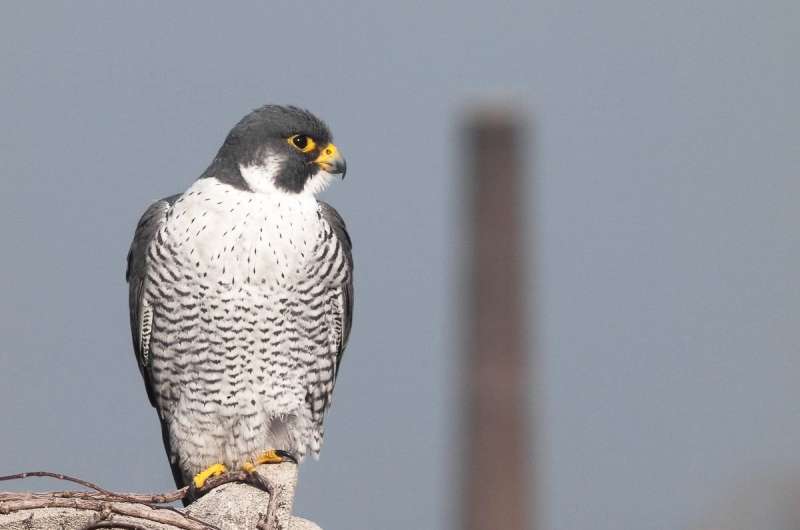November 6, 2018 report
Dominant bird species found to be more successful than weaker species in economically advanced cities

A pair of researchers with Queen's University in Canada has found that dominant species of birds in economically advanced cities have higher numbers than weaker species. In their paper published in Proceedings of the National Academy of Sciences, Paul Martin and Frances Bonier describe their study of hundreds of bird species living in cities around the globe and what they found.
A lot of birds live in modern cities—most of them are, of course, of species that have been able to adapt to urban habitats. In this new effort, the researchers wondered about the survivability of birds well suited to urbanization, but which face very stiff competition from other birds that are closely related to them—black-capped chickadees versus mountain chickadees, for example. To learn more, they compiled data on over 300 species of birds living in 260 cities around the world. They then compared breeding propensity for 142 closely related species in the cities included in the study. They also noted whether the birds of each species were considered dominant or subordinate. Dominant birds could be physically dominant, such as being larger or having better weapons such as beaks and talons. But they could also be dominant by being better at obtaining food, leaving little for other species to eat.
The researchers found that in areas where there was no overlap of species in a given city, dominant and subordinate populations were roughly equal. But in areas where there was overlapping range, birds that were more dominant tended to be more successful at reproducing and increasing their numbers—but only in cities that were in economically advanced countries. In cities in less developed countries, both species did equally well. The researchers were not able to offer an explanation for the difference but suggest that it could come down to resource availability.
The researchers suggest studies like theirs offer a better understanding of wildlife living in cites—something that is likely to grow in importance as cities across the globe continue to grow and change. They note that such studies also offer an opportunity to see evolution in progress.
More information: Paul R. Martin et al. Species interactions limit the occurrence of urban-adapted birds in cities, Proceedings of the National Academy of Sciences (2018). DOI: 10.1073/pnas.1809317115
Journal information: Proceedings of the National Academy of Sciences
Provided by Science X Network
© 2018 Science X Network




















